15 Exercises to Improve Balance and Prevent Falls

What exercises improves your balance and prevent falls
Poor balance often leads to falls, which can cause head injuries and other disabling injuries. Hip fractures, in particular, can lead to serious health complications and threaten independence. A combination of activities such as walking, strength training, and specific workouts can improve balance and prevent falls, especially as you grow older.
In addition to sensory and auditory input, motor control and muscle power are necessary to maintain stability. Purposeful movements that require balance and stability include walking, doing laundry, lifting shopping bags, and even relatively simple recreational activities such as fishing. Muscular strength is an important component of balance. Strong muscles stabilize the joints (spine, knees, ankles) and help prevent falls. Reflexive movements, such as recovering from a stumble, also require balance, motor control, and muscular strength.
A simple way to prevent falls is to introduce balance exercises into your weekly routine. There is a lot you can do to preserve and improve your balance, and it doesn’t take special fitness classes or exercises. Its recommended that you undertake balance training at least 3 days per week, to reduce the risk of falling. As well as reducing the risk of falling, balance exercises provide a number of other health benefits, including:
- Improved posture: Balance exercises help to strengthen your core muscles. By maintaining a strong core, you are able to maintain a healthy posture, which can also decrease the risk of chronic back pain.
- Stronger bones: Balance training promotes stable bones and joints, which minimizes the risk of injuries especially on the ankles, and fractures in the case of a fall.
- Increased reaction times and coordination: Balance exercises provide you with greater control of your limbs and body, which not only improves flexibility but also helps you avoid falls. Good balance allows you to quickly adapt to unexpected situations including variance in elevation such as steps.
- Improved brain function: Regular exercise helps maintain brain function and improve cognitive ability.
Balancing exercises work your core muscles, lower back, and legs. Lower-body strength-training exercises can also help improve your balance. You can do the following exercises anytime and almost anywhere.
Here are 15 exercises you can do in the comfort of your own home to help improve your balance and reduce the risk of falls and injuries as you age:
- Single leg stance. The goal of this exercise is to stand on one foot and hold this pose as long as you can. To begin, stand straight with your arms on the side or akimbo, lift up your left foot and balance on your right foot. Hold the pose for up to a minute, then switch feet. Repeat 10-15 times on each leg.

- Single leg swings. Stand straight with your arms akimbo, lift up your left foot and balance on your right foot. For support you can stand behind on the side of a chair or table and hold on to the back of it. Lift up your left foot and balance on your right foot. Swing one leg back and forth for 15 reps. Repeat on the other leg.

- Step up to balance (use the steps at home/stairs). Its a dynamic balance exercise because the step-up portion moves the body from one position to another. This creates momentum, which adds an additional challenge to the balancing leg. To perform the exercise, use a short, stable step (stair) or the fitness step-up that’s not too high. Step one foot forward and place it on the step, drive through the front foot to lift the body and back foot over the step and hold for 2-3 seconds.

- Airplane. Stand with feet together, arms at sides. Lift left foot back, bending forward until left leg and chest are parallel to ground. Spread your arms and balance. Hold for 15 counts. Repeat for the right leg.
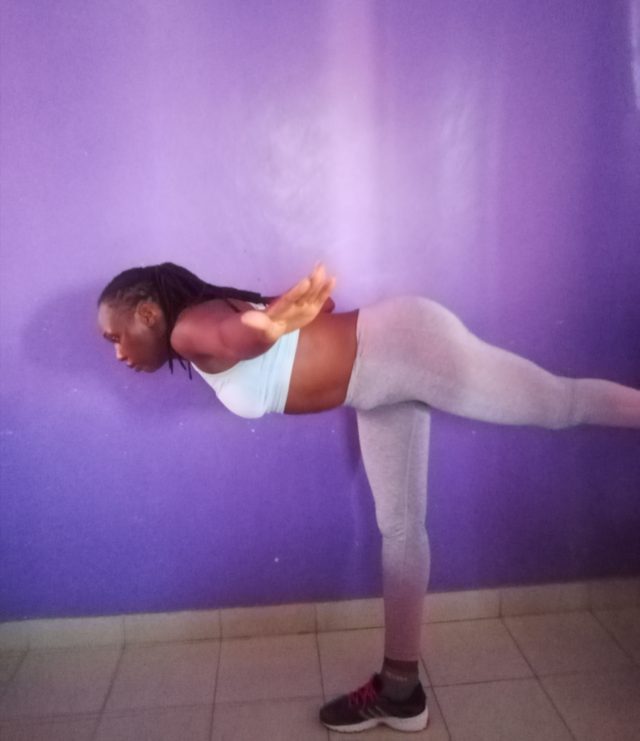
- Back leg raises. This exercise strengthens your lower back and glutes while also improving your balance. To complete this exercise, grab the back of a chair or a counter top, holding it with both hands. Slowly lift your left leg back without bending your knees. Hold this position for one second, then slowly bring your leg back down. Repeat 10-15 times on each leg.
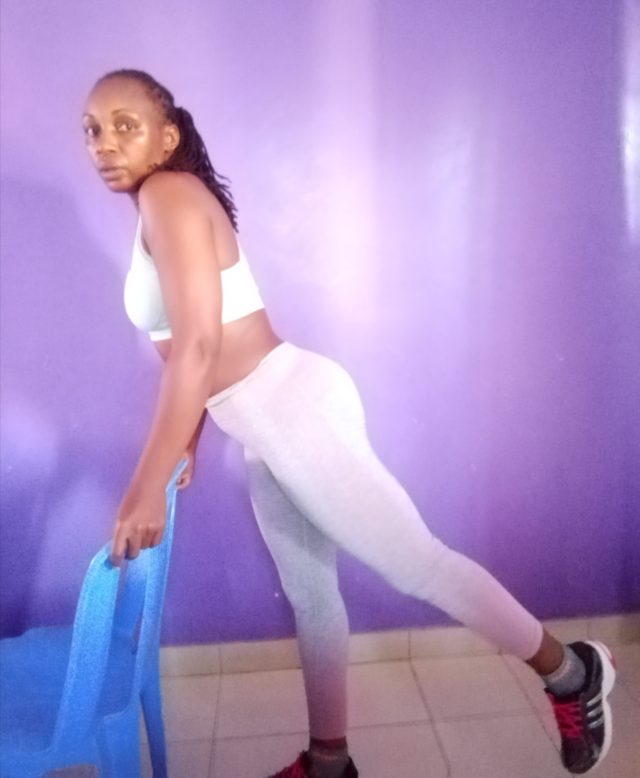
- Tightrope walk. The tightrope walk is a great exercise for improving balance, posture and core strength. Hold your arms out straight from your sides. Walk in a straight line, pausing for one to two seconds each time you lift a foot off the ground. To help you maintain your balance, focus on a spot in the distance and keep your head straight. Take 10 to 20 steps before moving onto the next exercise. You can add dumbbells or kettlebells to increase the intensity.

- Calf raises. Calf raises strengthen both your feet and calves while enhancing your balance. Balance on both feet and rise up onto your toes. You can use a kettlebell or dumbbell to increase the intensity. Hold for 10 seconds, then lower. Repeat 15 times.

- Lunge to knee up. Standing with your feet shoulder-width apart, take one generous stride backwards into a deep lunge and hold for a few seconds. Drive the same leg in an upwards motion towards your chest into a knee raise, straightening your standing leg. After pausing, lunge leg back again for next rep.


9. Knee extensions. Knee extensions can assist in building leg strength as well as your knee joint flexibility, balance and range of motion. Simply sit on a chair, with your back straight and your arms at your sides. Lift and straighten your left knee, pause for 2-3 seconds, and lower your leg back to the floor. Repeat with your right leg for 10-15 times.

10. Side leg raise. This simple exercise requires a chair to be completed. Stand behind the chair with your feet slightly apart. Slowly lift your left leg to the side. Keep your back straight and your toes facing forward and focus your sight straight ahead. Lower your left leg slowly and repeat on your right leg. Repeat this exercise 10-15 times per leg.
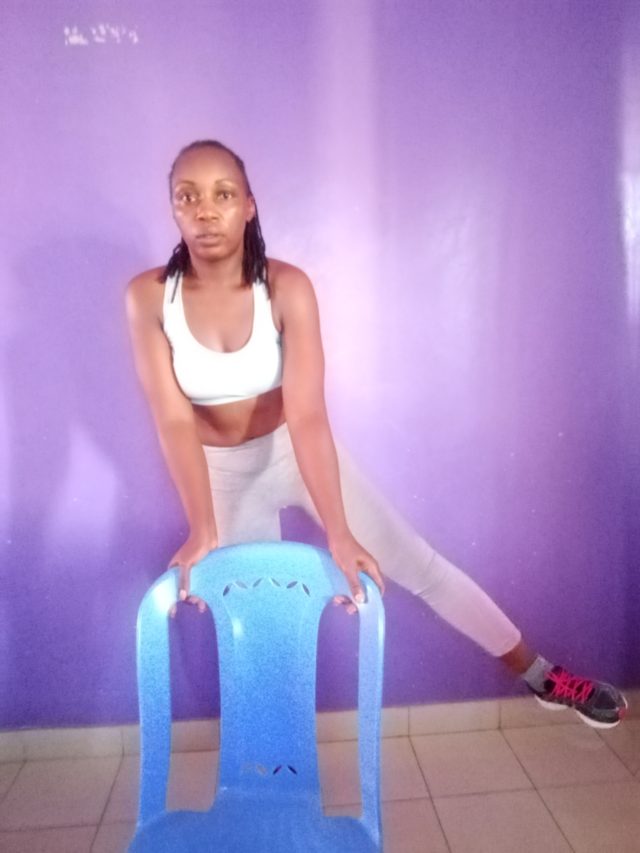
11. Walking heel to toe. This balance exercise improves your leg strength, reducing the risk of falls when walking. Place your left foot in front of your right foot so that the heel of your left foot touches the top of the toes of your right foot. Move your left foot in front of your right, putting your weight on your heel, then shifting your weight to your toes. Keep repeating these steps 10-20 times.

12. Single Leg Dead Lift. With or without dumbbells, this move not only strengthens your hamstrings and glutes, but it also challenges your balance and activates your abdominal wall. Stand with feet close together and put most of your weight onto your right foot, slowly lower your torso to the ground while lifting your left leg behind you. Keep your spine neutral and reach your hands toward the floor. With your back parallel to the floor squeeze your hamstrings, glutes, and abs as you slowly raise back up and return your back foot to the floor. Switch sides. Try for 15 deadlifts on each side.
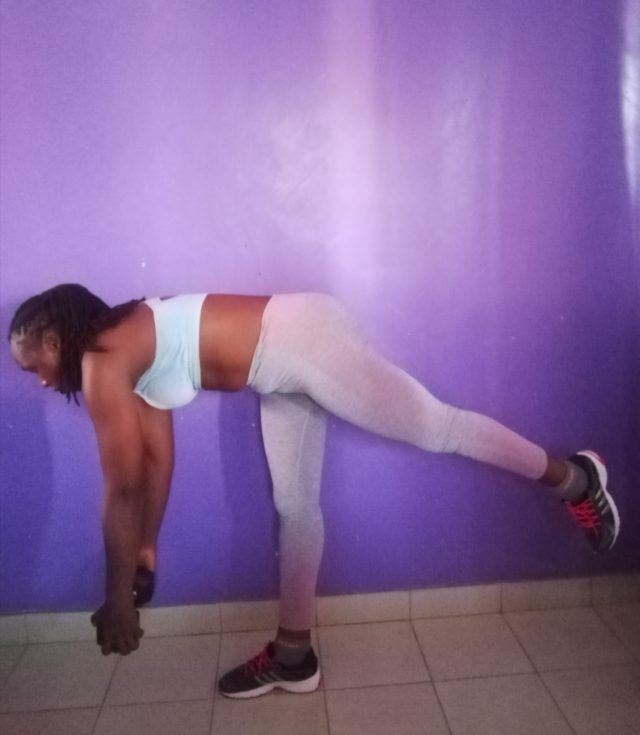
13. Tree Pose. It strengthens your ankles, improves your balance, and engages your core. Stand with feet together, spine tall, and arms outstretched. Slowly lift your left foot up to the side of your calf and balance on the right foot only. Slowly lift arms overhead to make the branches of the tree. Hold for 30 seconds, then switch legs.
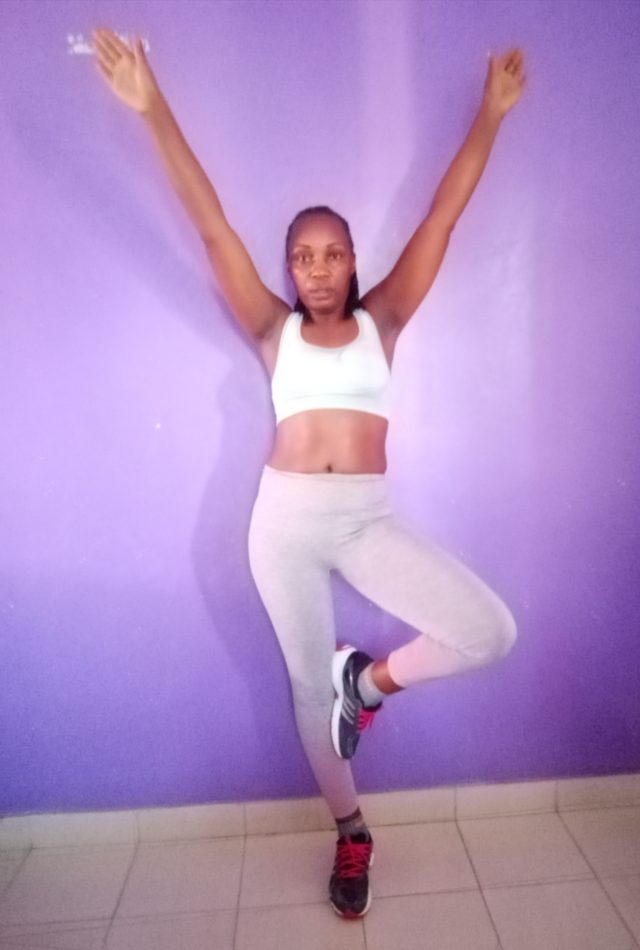
- Squats. Stand with feet a little wider than hip width, toes facing front. Drive your hips back, bending at the knees and ankles and pressing your knees slightly open, as you sit into a squat position while still keeping your heels and toes on the ground, chest up and shoulders back. Strive to eventually reach parallel, meaning knees are bent to a 90-degree angle. Press into your heels and straighten legs to return to a standing upright position.
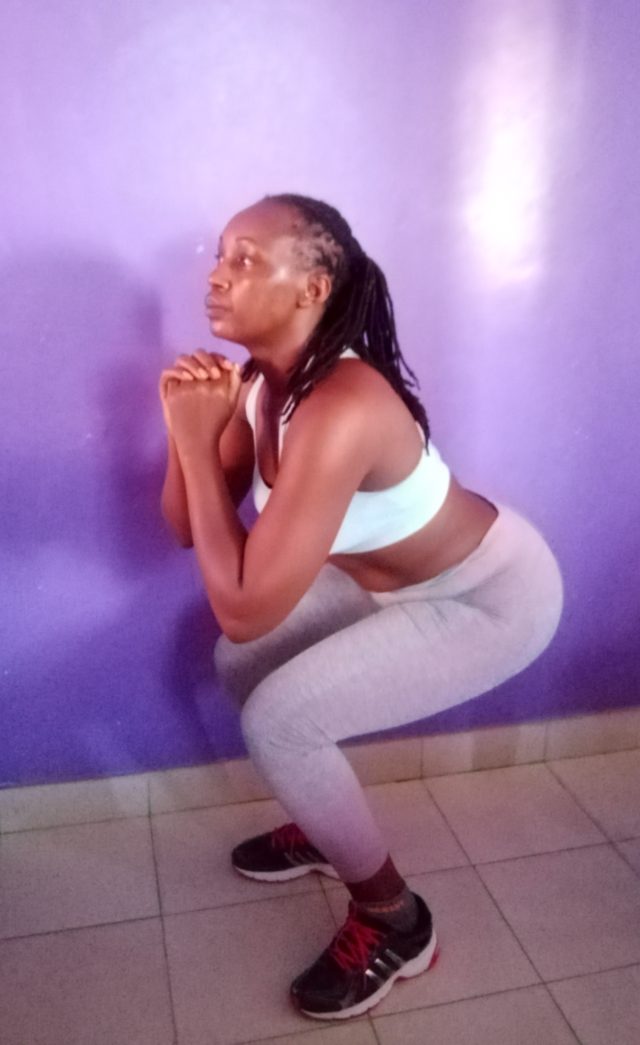
- Sit to Stand. Start by sitting on a stable chair (no swivel chairs or recliners. Try a kitchen chair). Rise to stand and then slowly lower back to a seated position. You can start with supporting yourself with the arms and as you get better you stand with your arms on the side with no support. Perform 15 -20 times.


Once you have mastered these exercises, you can continue improving your balance and adding variety to your balance exercise routine by:
- Holding the exercise position for a longer period of time
- Adding movement to a pose
- Closing your eyes
- Letting go of your chair or other support you may be using
- Adding free weights where possible
Balancing issues and falls don’t need to be a part of everyday life as we get older. By incorporating a balance exercise program into your weekly routine, you are able to greatly minimize the risk of falls and fall related injuries.



